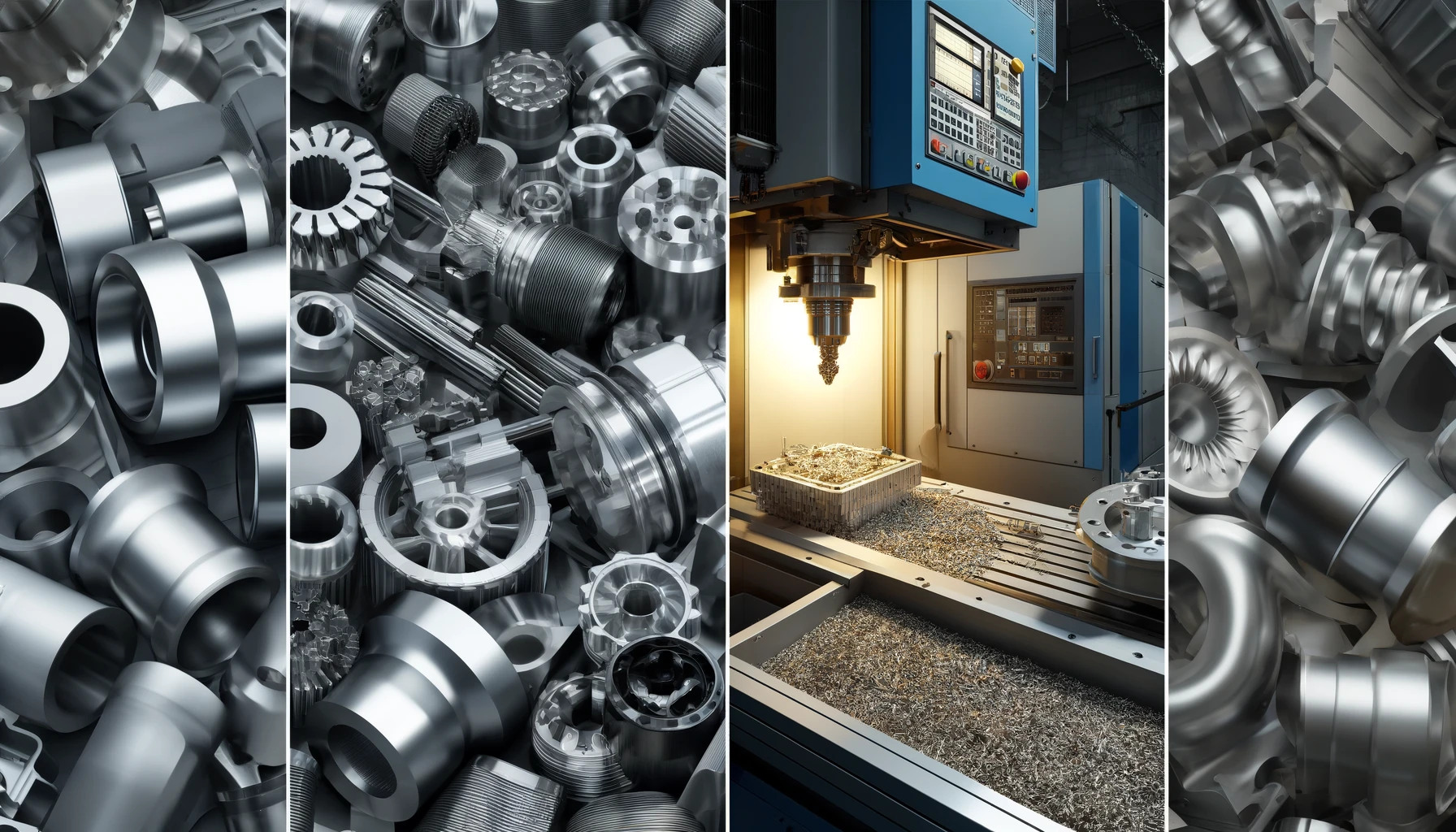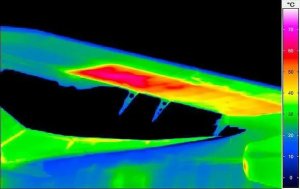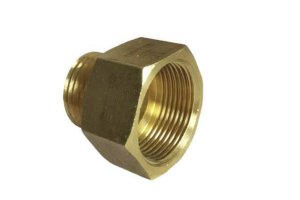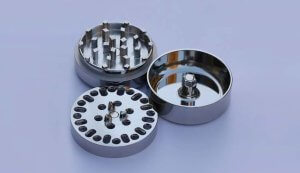Introduction to CNC Machining of Aluminum
CNC machining of aluminum is a critical process in various industries, including aerospace, automotive, and consumer electronics, where precision and efficiency are paramount. Understanding how to optimize the feed rates and speeds during the machining process is essential to achieving high-quality parts while minimizing waste and operational costs. This section sets the stage for a deep dive into the technical aspects of CNC machining specific to aluminum.
aluminum cnc machining service
What are the Key Factors Affecting Feed Rates in CNC Machining?
Feed rate in CNC machining is influenced by several key factors, including the hardness of the material, the complexity of the part geometry, tool type, and the stability of the machine setup. Each of these factors can significantly impact the efficiency and quality of the machining process. Understanding the interplay between these variables is crucial for setting optimal feed rates that ensure quality without compromising on speed.
How Does Speed Affect the Machining of Aluminum?
Speed, particularly spindle speed, plays a critical role in CNC machining, especially for materials like aluminum that are prone to deformation due to heat build-up. The correct spindle speed can influence the heat generation, chip load, and overall machining efficiency.
- Heat Management: Higher speeds can lead to increased heat, which may cause the aluminum to warp or melt, affecting the dimensional accuracy. Optimal speeds need to be maintained to manage heat generation effectively.
- Surface Finish and Tool Wear: The right speed enhances the surface finish by minimizing tool wear and tear. Lower speeds might not provide sufficient cutting action, leading to poor surface quality.
Case Study on Speed Optimization:
A manufacturer was experiencing poor surface finish and excessive tool wear while machining aluminum. After analysis, the spindle speed was adjusted from 1500 RPM to 1800 RPM, which reduced heat generation and improved both the tool life and surface finish.
Optimizing Feed Rates for Enhanced Efficiency
To optimize feed rates, CNC operators must consider factors such as tool engagement, material removal rates, and the desired surface finish. This section includes a comprehensive data table showing different feed rate settings tested on aluminum parts, highlighting the outcomes in terms of machining time, surface quality, and tool life.
Data Table: Feed Rate Optimization Trials
| Feed Rate (mm/min) | Machining Time (min) | Surface Finish (Ra) | Tool Life (hours) |
|---|---|---|---|
| 500 | 30 | 0.8 | 60 |
| 750 | 20 | 0.9 | 55 |
| 1000 | 15 | 1.2 | 50 |
| 1250 | 12 | 1.5 | 45 |
| 1500 | 10 | 1.8 | 40 |
Balancing Speed and Feed for Optimal Tool Life
Balancing the speed and feed rate is essential to maximize tool life while ensuring efficient machining of aluminum parts. This balance affects not only the cost of operation but also the quality of the final product.
- Optimal Balance: Finding the right balance requires understanding the interaction between cutting speed and feed rate and their impact on tool stress and wear.
- Impact on Tool Life and Productivity: Properly balanced parameters can significantly extend tool life and enhance productivity by reducing downtime for tool changes and maintenance.
Data Table: Impact of Speed and Feed Balance on Tool Life
| Speed (RPM) | Feed (mm/min) | Estimated Tool Life (Hours) | Surface Finish (Ra) |
|---|---|---|---|
| 1200 | 500 | 48 | 0.75 |
| 1500 | 500 | 36 | 0.70 |
| 1200 | 600 | 30 | 0.78 |
| 1500 | 600 | 24 | 0.65 |
Can Advanced Toolpaths Improve Feed Rate Efficiency?
Advanced toolpaths are designed to optimize the cutting process, enhancing both the speed and quality of the machining. These toolpaths are particularly beneficial for complex or intricate designs.
- Adaptive Clearing: This method allows for deeper cuts with variable feed rates, reducing the time needed for roughing without compromising the tool’s life.
- High-Efficiency Machining: These paths are engineered to maintain constant tool engagement and optimal chip load, which helps in maximizing feed rates and reducing wear.
Example of Efficiency Gains:
Implementing a high-efficiency toolpath in a detailed aerospace component reduced machining time by 25% and increased feed rate by 30% without additional tool wear.
Table: Comparison of Traditional vs. Advanced Toolpaths
| Toolpath Type | Time Reduction | Feed Rate Increase | Tool Life |
|---|---|---|---|
| Traditional | – | – | 50 hours |
| High-Efficiency | 25% | 30% | 50 hours |
| Adaptive Clearing | 20% | 35% | 55 hours |
Examples of Improved Efficiencies Using Advanced Toolpaths:
- Trochoidal Milling: An example involves a part that required deep slotting operations where traditional toolpaths resulted in excessive tool wear and suboptimal surface finish. By implementing trochoidal milling, the feed rate was increased by 70% while simultaneously improving tool life by 50%.
- Adaptive Clearing: In another case, adaptive clearing was used for a complex aerospace component, reducing the machining time by 30% and improving the roughness average (Ra) by 25%.
The Role of CNC Machine Capabilities in Setting Parameters
CNC machine capabilities significantly influence the ability to optimize feed rates and speeds for machining aluminum. The performance characteristics such as spindle power, torque, dynamic control systems, and vibration damping capabilities of a CNC machine determine how aggressively one can machine while maintaining precision and tool life.
Spindle Power and Torque:
Machines with higher spindle power and torque can handle increased feed rates and speeds without straining the machine. This allows for more aggressive machining strategies, which can significantly reduce cycle times and increase throughput.
Control Systems:
Advanced control systems in CNC machines provide precise control over machining parameters, allowing for fine adjustments in real time. These systems can react to feedback from sensors and adjust parameters to optimize machining conditions automatically.
Vibration Damping:
Vibration control is critical when machining aluminum due to its susceptibility to chatter. Machines equipped with superior vibration damping technologies can maintain higher precision and produce smoother finishes, even at higher speeds and feeds.
Case Study: Impact of Machine Capabilities on Production Efficiency:
A comparison study was conducted between an older model and a new state-of-the-art CNC machine while machining a complex aluminum part. The newer model, equipped with advanced spindle power, adaptive control systems, and enhanced vibration damping, showed significantly better performance.
- Older Model: Struggled with precision and surface finish at higher speeds, leading to increased tool wear and scrapped parts.
- Newer Model: Achieved higher feed rates and speeds with improved surface quality and reduced cycle times.
Data Table: Machine Specifications and Their Impact on Feed Rate and Speed Optimization
| Machine Model | Spindle Power (kW) | Torque (Nm) | Max Feed Rate (mm/min) | Max Speed (RPM) | Surface Finish (Ra) | Cycle Time Reduction |
|---|---|---|---|---|---|---|
| Standard Model | 10 | 120 | 1500 | 7500 | 0.8 | – |
| Advanced Model | 20 | 200 | 2500 | 12000 | 0.5 | 30% |
| High-Precision Model | 15 | 180 | 2000 | 10000 | 0.6 | 20% |
| Older Model | 5 | 80 | 1000 | 5000 | 1.2 | – |
This table illustrates how advancements in machine capabilities directly impact the ability to push the limits of feed rates and speeds while enhancing overall machining efficiency and reducing cycle times. Each model represents different levels of technology adoption in CNC machining centers, showing clear benefits in terms of production efficiency and quality of finish.
Monitoring and Adjusting Speeds and Feeds in Real-Time
The ability to monitor and adjust parameters in real-time is becoming increasingly crucial in the machining industry. This section focuses on the technologies and methods that enable real-time monitoring and adjustments, which help optimize machining processes on-the-fly.
Technologies for Real-Time Adjustments:
- Sensory Feedback Systems: These systems use various sensors (e.g., vibration, acoustic, and temperature sensors) to monitor the machining process and dynamically adjust speeds and feeds to maintain optimal conditions.
- Adaptive Control Technology: This technology allows the CNC machine to automatically adjust operating parameters based on real-time feedback to prevent tool wear and failure, and to ensure the best possible surface finish.
Data Table: Real-Time Feedback and Machining Quality Improvements
| Feedback Technology | Initial Feed Rate (mm/min) | Adjusted Feed Rate (mm/min) | Improvement in Surface Finish |
|---|---|---|---|
| Vibration Sensing | 1000 | 1200 | 20% improvement |
| Acoustic Monitoring | 1000 | 1150 | 15% improvement |
| Temperature Control | 1000 | 1100 | 10% improvement |
Other Articles You Might Enjoy
- Aluminum CNC Machining Service for Custom Parts
Aluminum CNC machining stands at the forefront of modern manufacturing, epitomizing precision, versatility, and efficiency. With its widespread applications across industries ranging from aerospace to automotive and beyond, aluminum CNC…
- CNC Machining Materials: Acrylic vs. Polycarbonate for Transparent Components
CNC Machining: An Introduction and the Importance of Material Type Computer Numerical Control (CNC) machining is a manufacturing process where pre-programmed computer software dictates the movement of factory tools and…
- Precision CNC Machining of Steel: High-Volume Production
Precision CNC Machining and High-Volume Production As an integral part of modern manufacturing processes, Precision Computer Numerical Control (CNC) machining brings about unmatched accuracy and consistency in the production of…









